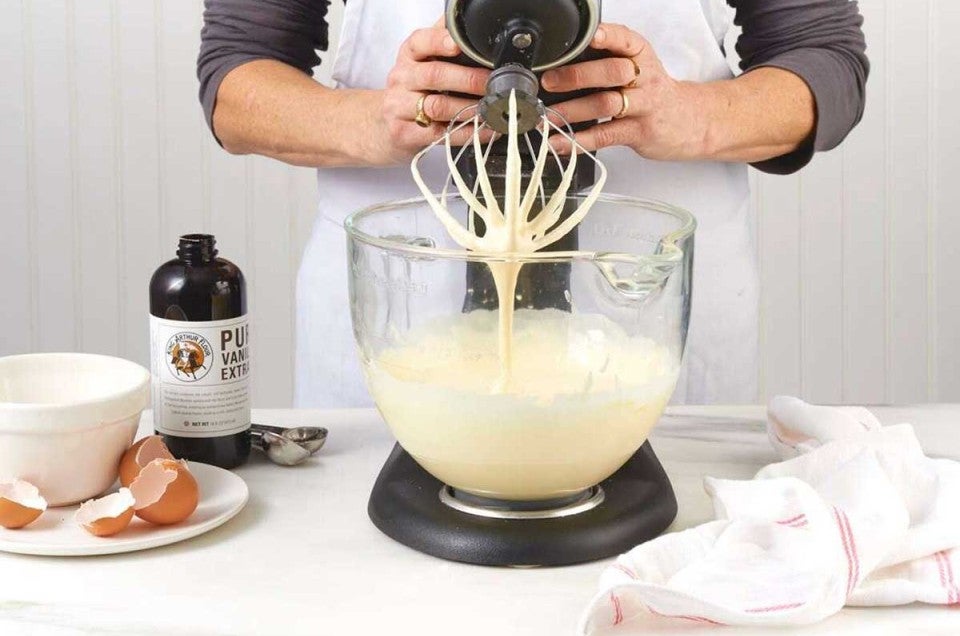


We rely on our senses throughout the whole process of baking, and one of the most important elements is using visual clues to determine how a recipe is coming together. Our eyes are our best friend in the kitchen — they can spot if butter and sugar need to be creamed longer to become truly light and fluffy, or whether doughnuts have risen enough to start frying.
Baking is a multi-sensory experience — keeping an eye out for visual clues throughout the process can help maximize success.
Usually recipes include descriptions of what to look for as you bake, like the stiffness of peaks in meringue. One common direction that pops up in certain cake recipes is what’s often referred to as the “ribbon stage” — an indication that your batter should “fall in thick ribbons," as many recipes might state.
So what exactly does this mean?

Ribbon stage is a necessary step in cake recipes that call for beating eggs and sugar together until a thick, voluminous batter is created, prior to adding the flour and any other ingredients. Cakes that use this mixing method are most frequently sponge cakes, like Tres Leches Cake or Almond Roll, but it's also used in hot milk cakes like Classic Birthday Cake (our 2019 Recipe of the Year!).
In these recipes, whole eggs and sugar are beaten together, or the eggs are separated — the egg yolks and sugar are beaten to ribbon stage, while the egg whites are reserved, whipped to stiff peaks, then folded into the batter for additional lightness and volume.
In some cases the sugar isn't added until after the eggs have been beaten, and occasionally the eggs alone will be beaten to ribbon stage. Regardless of how a recipe gets there, however, the visual clues remain the same.

The ribbon stage specifically refers to the thick, pale, foam-like batter created when eggs and sugar are beaten together. To ensure the batter is properly whipped, directions will tell you it should fall in ribbons.
Usually it takes anywhere from 3 to 5 minutes of beating eggs and sugar using an electric mixer to reach ribbon stage. But don't rely on time. Instead, use some key visual clues to recognize when you’ve succeeded:

The goal in beating eggs and sugar is to incorporate plenty of air into the mixture for a light and fluffy cake. Because these cakes rely on eggs for structure and lift, properly aerating the mixture is crucial. In other words, ribbon stage is key to the texture and height of your final baked cake.

Baker’s tip: If you need to bring your eggs to room temperature in a jiffy, my fellow blogger Kye has you covered. She advises placing cold eggs in a bowl of very hot water for about 5 minutes while you measure out the rest of your ingredients. Your eggs will be at room temperature in no time.


Baking is a truly sensory experience — our eyes, ears, nose, hands, and mouth all play a role from start to finish. Keeping an eye out for key hallmarks like a beautiful formed ribbon of batter is just one of the ways to improve your technique and take pleasure in the process along the way.
For a deeper dive into cake mixing techniques, read our blog post on cake mixing methods for insight on everything from blended to foam cakes.

